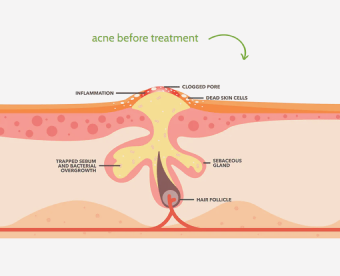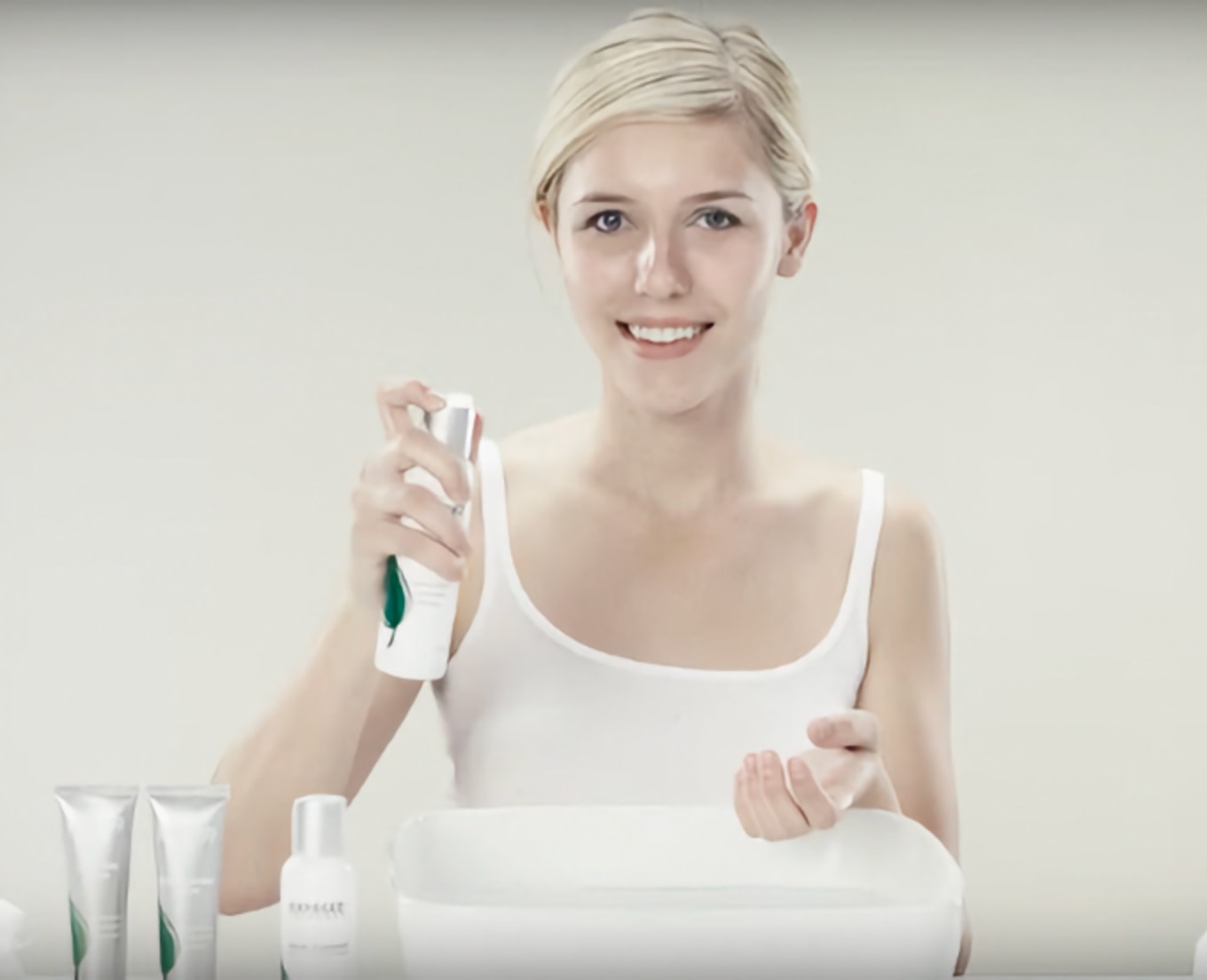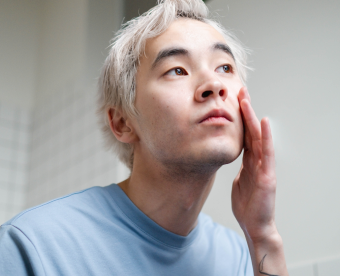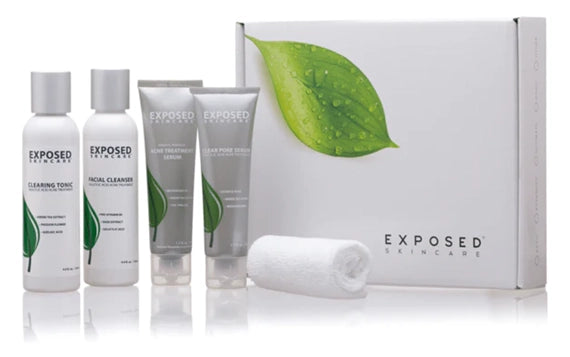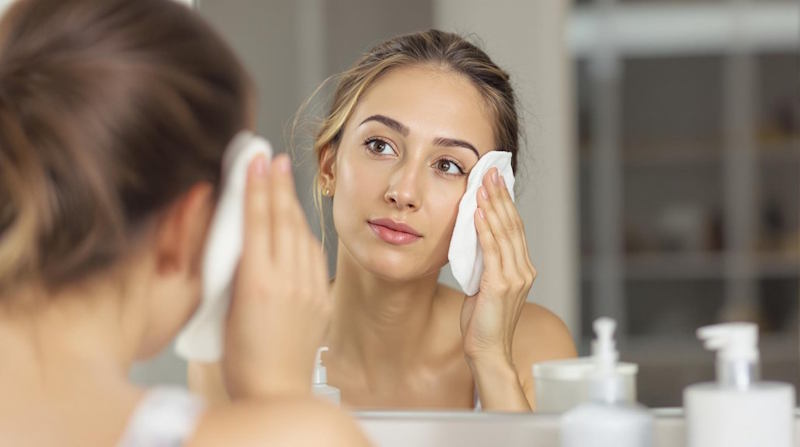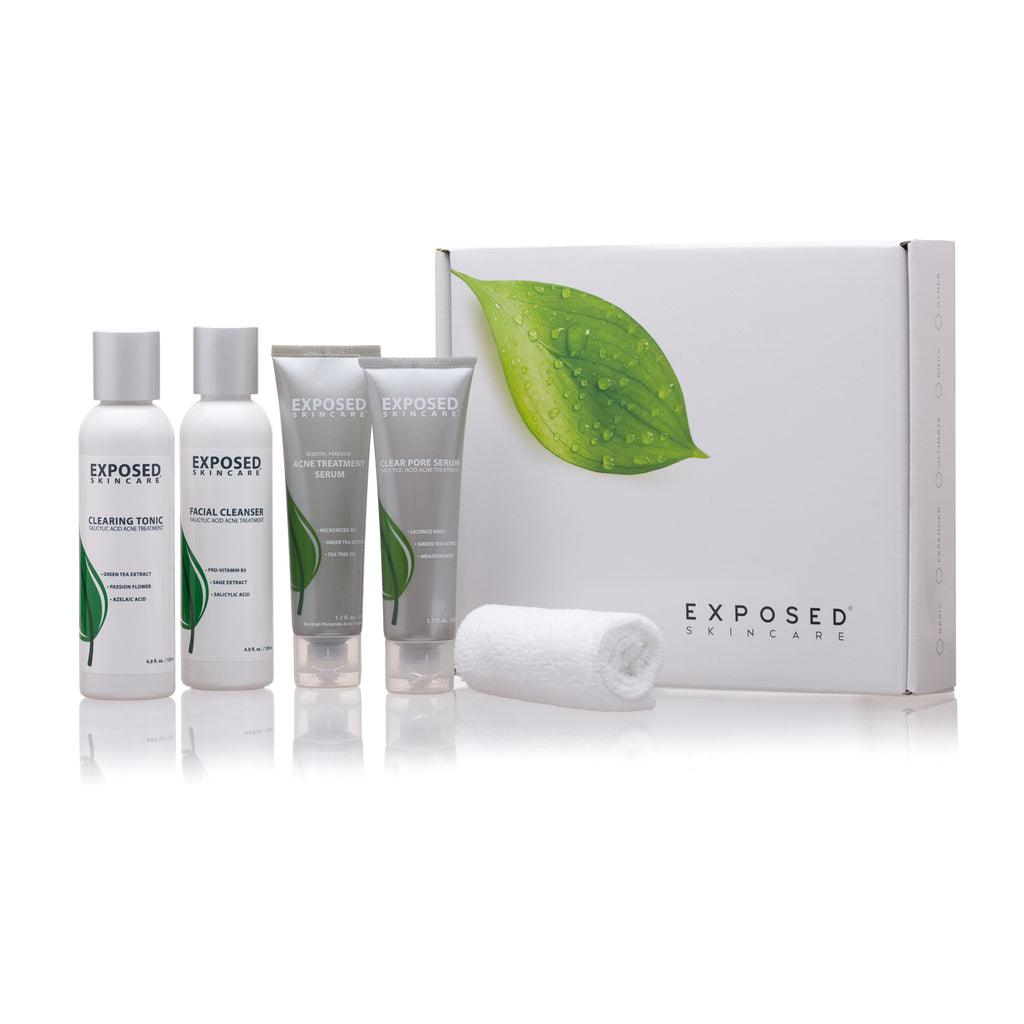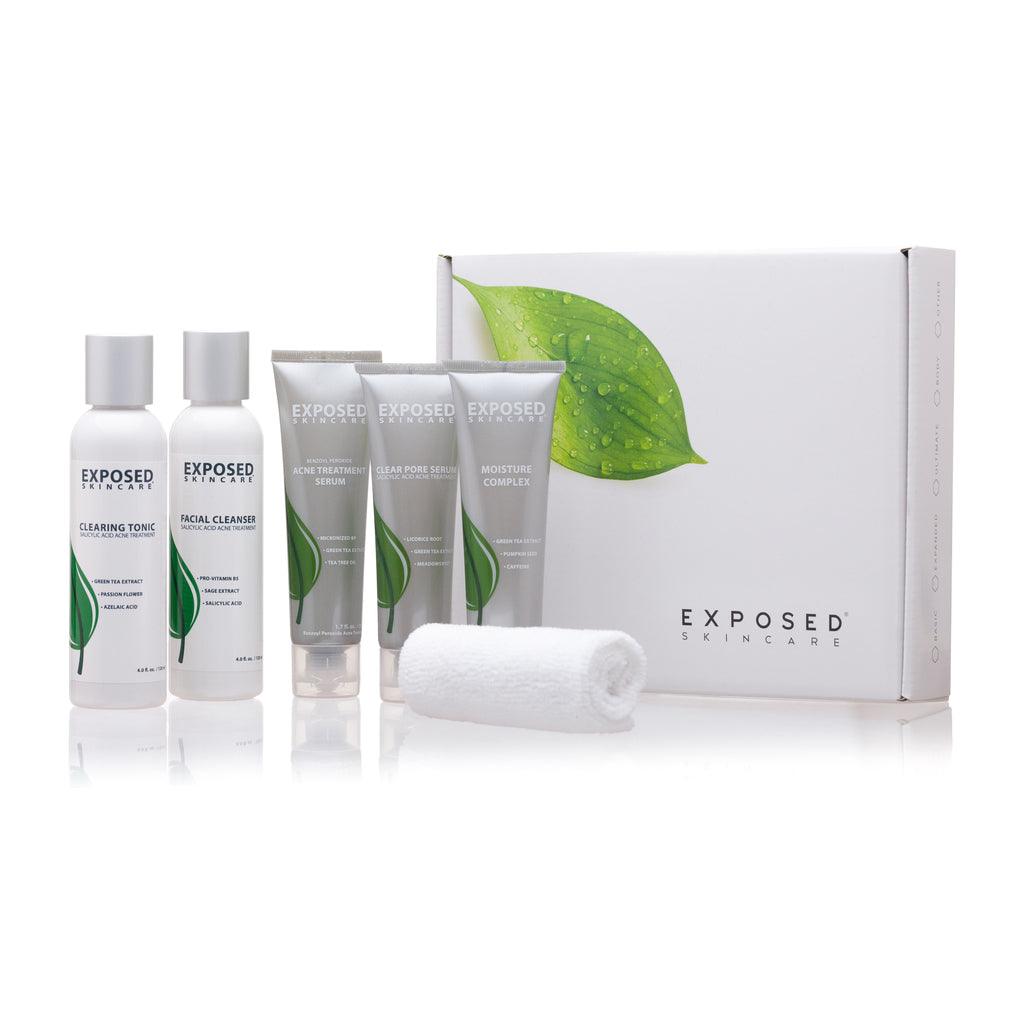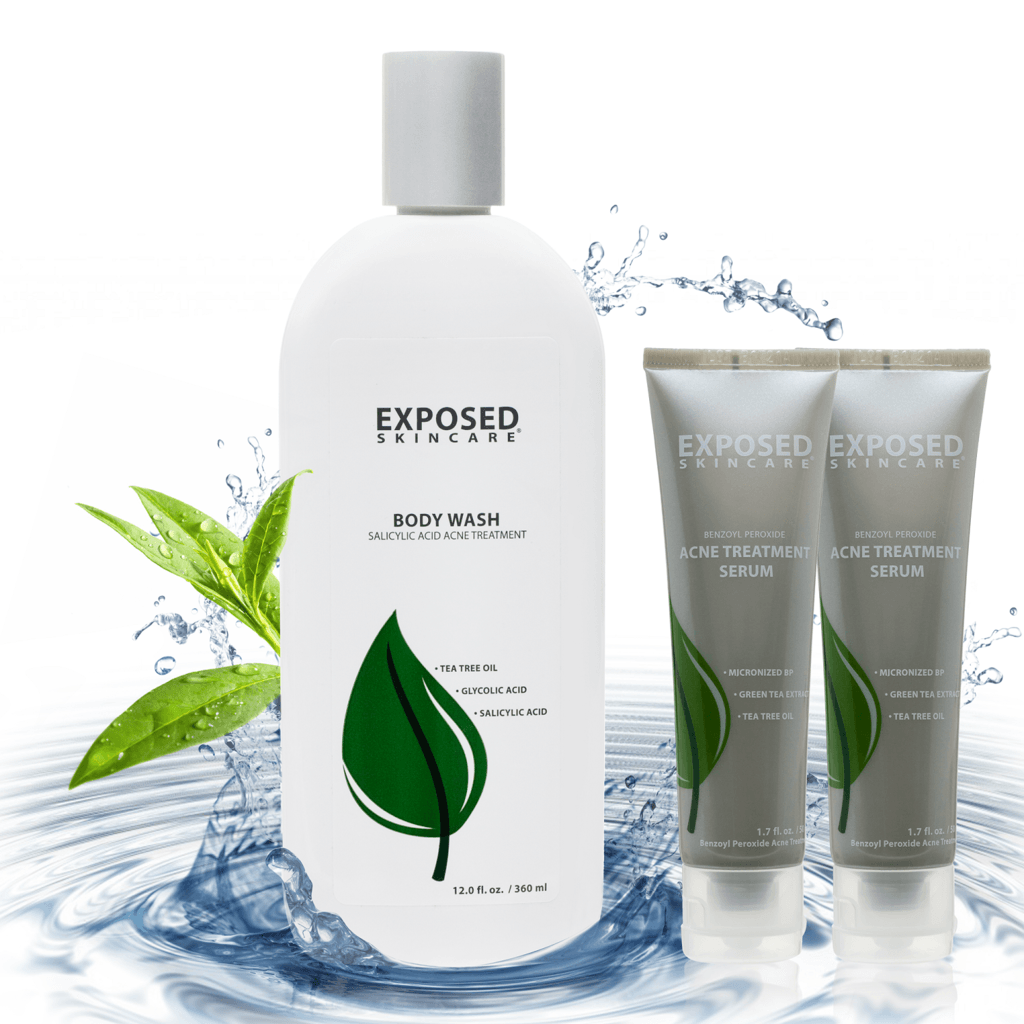Yes, smoking absolutely triggers acne. Those chemicals in cigarettes increase inflammation, boost oil production, and clog pores – creating that perfect storm for stubborn breakouts. Plus, smoking starves your skin of oxygen, making healing nearly impossible. Exposed's 4-Step System targets these specific smoking-related issues with ingredients like green tea extract that combat tobacco damage. Your skin can bounce back after quitting, but a targeted approach speeds up the recovery process.
Biggest Takeaways
-
Smoking directly causes smoker's acne (APAA) by increasing sebum production and triggering inflammation through nicotine and other chemicals.
-
Smoker's acne presents with stubborn whiteheads and blackheads in distinct patterns, resisting traditional acne treatments.
-
Tobacco smoke damages skin's protective barrier, restricts blood flow, and creates oxidative stress that worsens existing acne conditions.
-
Quitting smoking improves skin circulation within 4-12 weeks, decreases inflammation, and restarts collagen production for healthier skin.
-
Exposed Skin Care's 4-Step System targets smoking-related acne with ingredients like green tea extract and aloe vera to repair tobacco damage.
The Smoking-Acne Connection: How Cigarettes Trigger Breakouts

While you may have heard mixed messages about whether lighting up a cigarette can trigger breakouts, the science is pretty clear—and it's not great news for smokers.
So, does smoking cause acne? Absolutely. Cigarettes trigger something called APAA (atypical post-adolescent acne), characterized by those stubborn non-inflammatory bumps that seem to last forever.
The nicotine in cigarettes cranks up your sebum production, creating a perfect storm for clogged pores. But that's just the beginning.
Smoking literally chokes off your skin's blood supply, meaning less oxygen and nutrients reach your face. Add in how cigarette chemicals dehydrate your skin and trigger inflammation, and you've created the perfect recipe for breakouts that won't quit.
Smoking suffocates your skin from the inside out, creating the perfect environment for stubborn breakouts.
Plus, long-term smoking damages collagen, making your skin more vulnerable to acne and slower to heal.
Understanding Smoker's Acne: Symptoms and Recognition
Four telltale signs set smoker's acne apart from your garden-variety breakouts.
First, you'll spot mostly non-inflammatory bumps—those stubborn whiteheads and blackheads that cluster rather than inflame. Unlike the angry red pimples you might be used to, these comedones are your skin's quiet protest against tobacco.
Second, these breakouts have an unusual distribution pattern compared to hormonal acne.
Third, you might notice your skin's texture changing alongside these breakouts—becoming duller with more visible pores.
Finally, traditional acne treatments often underperform against smoker's acne because they're not addressing the root cause: nicotine's impact on dead skin cell buildup and altered sebum production.
Your skin's facing a unique battle against oxidative stress and inflammation that requires a multi-pronged approach, not just spot treatments.
Beyond Nicotine: How Tobacco Compounds Affect Your Skin

Nicotine gets all the blame, but it's actually just the ringleader of a toxic gang wreaking havoc on your skin. When you light up, you're flooding your face with hundreds of chemicals that sabotage your skin in multiple ways.
Think of cigarette smoke as an acne amplifier. Those harmful compounds destroy your skin's protective barrier, triggering your oil glands to go into panic mode and produce excess sebum.
Meanwhile, tar and other pollutants are clogging your pores while oxidative stress is throwing an inflammation party on your face.
The real kicker? Smoking literally starves your skin, restricting blood flow and depriving your face of the oxygen and nutrients it needs to heal.
No wonder smokers often battle stubborn breakouts that just won't quit.
Breaking the Cycle: Why Quitting Smoking Improves Skin Health
If you're still clutching that cigarette while hunting for the perfect acne solution, you might be sabotaging your own skin goals.
Here's the no-BS truth: quitting smoking is like hitting the reset button for your complexion.
Within just 4-12 weeks of kicking the habit, your skin's circulation improves dramatically. That means better oxygen delivery, fewer age spots, and reduced redness. The glow-up is real.
Your body also restarts collagen production (the stuff that keeps your face from looking like a deflated balloon) and inflammation levels drop considerably.
Translation? Less severe breakouts and faster healing when zits do appear.
Plus, your skin's moisture barrier strengthens, balancing oil production—exactly what you need to prevent those frustrating chin eruptions and forehead bumps.
Exposed's 4-Step System: Targeting Smoking-Related Acne Drivers

Smoking wreaks havoc on your skin through multiple pathways, which is why a scattered approach to treatment just won't cut it.
You need a system that tackles the whole problem—not just a random spot treatment you found on TikTok.
Exposed's 4-Step System hits all the smoking-related acne drivers simultaneously. The exfoliating cleanser removes the buildup of dead skin cells that cigarettes accelerate.
The comprehensive approach your smoke-damaged skin desperately needs—tackling cigarette-accelerated cell buildup while other brands just scratch the surface.
Their balancing toner counteracts the inflammation from tobacco's oxidative stress, while the treatment serums deliver active ingredients that speed healing (which nicotine notoriously slows down).
While everyone's raving about the latest one-ingredient wonder, Exposed quietly delivers actual results by addressing the complex relationship between smoking and breakouts.
And unlike that random skincare guru promising overnight miracles, they back it with a full year guarantee.
Clear Skin Timeline: What to Expect After Quitting Tobacco
While quitting tobacco feels like an uphill battle, your skin starts healing almost immediately behind the scenes.
You're not imagining things when your complexion begins to transform – it's science backing you up, not some miracle cream hype.
Here's what your skin journey typically looks like post-cigarettes:
-
Weeks 1-4: Age spots fade and that persistent redness chills out as blood flow improves and carbon monoxide levels drop.
-
Weeks 4-12: Your natural skin tone resurfaces as those smoking-induced color changes start reversing themselves.
-
Months 3+: Collagen production kicks into gear again, gradually restoring elasticity and hydration that smoking stole.
Your squad of non-smoker friends wasn't lying – quitting actually works.
Your skin's rapid healing response is just waiting for you to put down that pack.
Botanical Solutions: How Natural Ingredients Combat Tobacco Damage
After years of assault from tobacco smoke, your skin deserves a fighting chance with nature's own defense squad.
Look, those fancy overpriced serums aren't your only option. Green tea extract and aloe vera pack serious antioxidant punch against smoke-induced damage, while jojoba and tea tree oils actually unclog pores instead of just making empty promises.
Skip the wallet-draining serums and trust real plant power that fights smoke damage while actually fixing your pores.
When your skin's throwing a full-blown inflammation tantrum, chamomile and calendula step in like the chill friends who know exactly how to calm things down.
Meanwhile, witch hazel and rosehip oil are busy restoring moisture your smoke habit stole.
These botanical ingredients aren't just trendy wellness fluff—they're repairing your compromised skin barrier with science-backed benefits that address all four acne drivers simultaneously.
Unlike those one-trick-pony products that leave you breaking out next week.
Customer Success Stories: How Exposed Helped Former Smokers
The real MVPs in this skincare saga? Former smokers who kicked the habit and partnered with Exposed to transform their skin. Their results speak volumes about what happens when you ditch cigarettes and embrace solid skincare.
Here's what these skin success stories reveal:
-
Rapid visible improvements - Within weeks, users reported dramatically clearer skin as improved blood flow and nutrient delivery began repairing tobacco damage.
-
Inflammation nosedive - The combination of quitting smoking and Exposed's anti-inflammatory ingredients led to markedly fewer angry, red breakouts.
-
Confidence restoration - Beyond just clearer skin, former smokers experienced improved texture and overall appearance, giving them back the confidence smoking had stolen.
These aren't fluffy marketing claims—these are real people who finally found something that works after smoking wrecked their skin.
Frequently Asked Questions
Does Smoking Clear up Acne?
No, smoking won't clear your acne. While some smokers report fewer breakouts, nicotine actually worsens the four acne drivers. You'll need a complete system like Exposed to truly heal.
Can You Reverse Skin Damage Due to Smoking?
You'll see improved skin tone and elasticity within 4-12 weeks of quitting smoking as your collagen rebuilds. Pairing this with Exposed's four-driver treatment speeds healing for noticeably clearer skin.
Will My Face Look Better if I Stop Smoking?
Yes, your face will absolutely look better when you quit smoking! You'll see reduced redness, improved hydration, and a more vibrant complexion within just 4-12 weeks as your skin naturally repairs itself.
Does Smoking Stop Skin Healing?
Yes, smoking directly impairs your skin's healing process by reducing blood flow, hindering collagen formation, and weakening your immune response—exactly what your skin needs to repair itself properly.
Putting It All Together
Your smoking habit isn't just burning your lungs—it's setting your skin on fire too. While Exposed might ease the symptoms, quitting is still your best bet for truly clear skin. You can't have your cake and eat it too when it comes to cigarettes and complexion. Whatever path you choose, remember that healing takes time, but your skin's natural resilience will thank you for kicking the habit.

